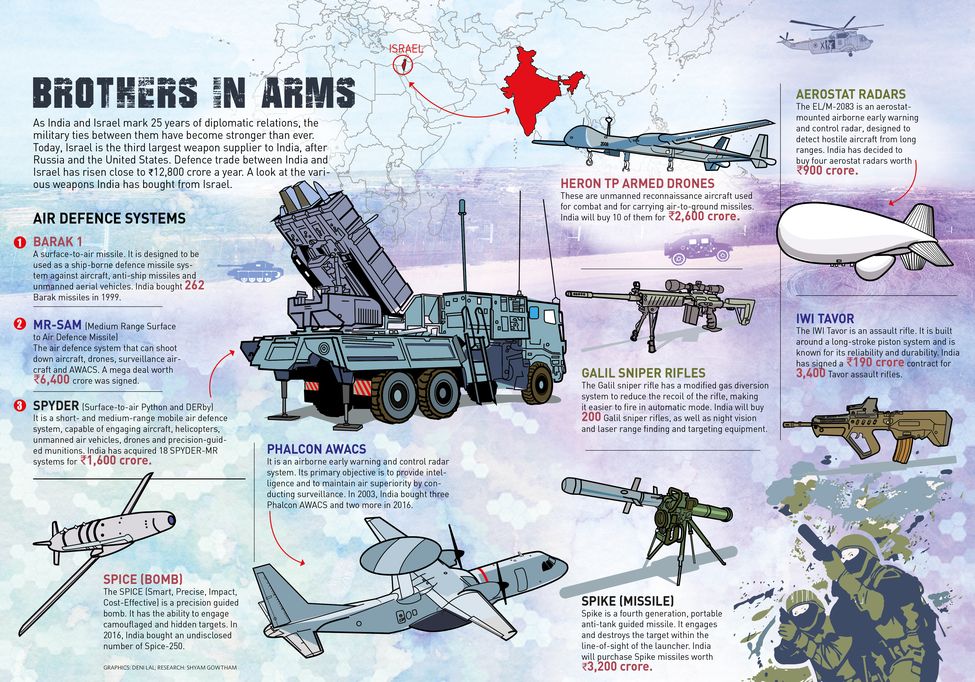Narendra Modi’s visit to Israel, from July 4 to 6, will disappoint many people—those in India who are expecting an outrage in the Arab world.
Unlike what many in India think, the Arabs are quietly cheering Modi. A month and a half ago, Palestinian National Authority President Mahmoud Abbas was in Delhi, where Modi briefed him about his visit. So had Foreign Minister Sushma Swaraj, during her Israel-Palestine jaunt in January. Modi’s diplomats are in touch with Saudi Arabia, which has been secretly exchanging intelligence with Israel, often through the US and, of late, through India. At India’s behest, Israel received a retired Saudi general last year, who sought to mend the kingdom’s ties with Israel. Israeli drones, which have been effective against the Shia militant group Hizbullah, are being secretly shipped through South Africa to Saudi Arabia. The Saudis use them to spy on Iranian warships in the Persian Gulf and the Houthi rebels waging war in Yemen.
New gang-ups are forming in West Asia over new crises. The old Palestine problem hardly figures in them. So much so that there is no commemoration (by the Jews) or condemnation (by the Muslims) of the centenary of Arthur Balfour’s historic 1917 ‘declaration’ of a homeland for the Jewish people. Nor is anyone commemorating the centenary of the 1917 capture of Jerusalem by a Christian commander (after eight centuries of Muslim rule), leading an army of Indian Muslims and Hindus, and giving over the mandated territory to the Jews for building their homeland.
In the new politics of West Asia, friend-and-foe lineups are no longer determined by centuries-old political history, nor by the history of voting patterns (for or against Palestine) at the United Nations. Thus, India’s long-held support for Palestine is no longer an issue with the Israelis; nor is India’s open friendship with Israel an issue with the Palestinians, or with the Sunni Arab kingdoms and sheikhdoms.
In the new West Asian crisis, Israel is no longer the cause, and Palestine is no longer a problem. Rather, “we are part of the solution,” pointed out Ron Paz, director at Israel’s government press office and a great lover of India. He ought to be. He had met his wife, a Korean, on the banks of the Ganga in Varanasi, in the 1990s.
I heard the same view—that Israel is now part of the solution—from Ely Karmon, Israel’s legendary scholar of terror studies. In a one-hour PowerPoint presentation that Karmon gave me at his Israeli Institute of Counter-Terrorism office, located amid a clutch of refurbished British army barracks in Herzliya, there were very few mentions of the Palestine issue.
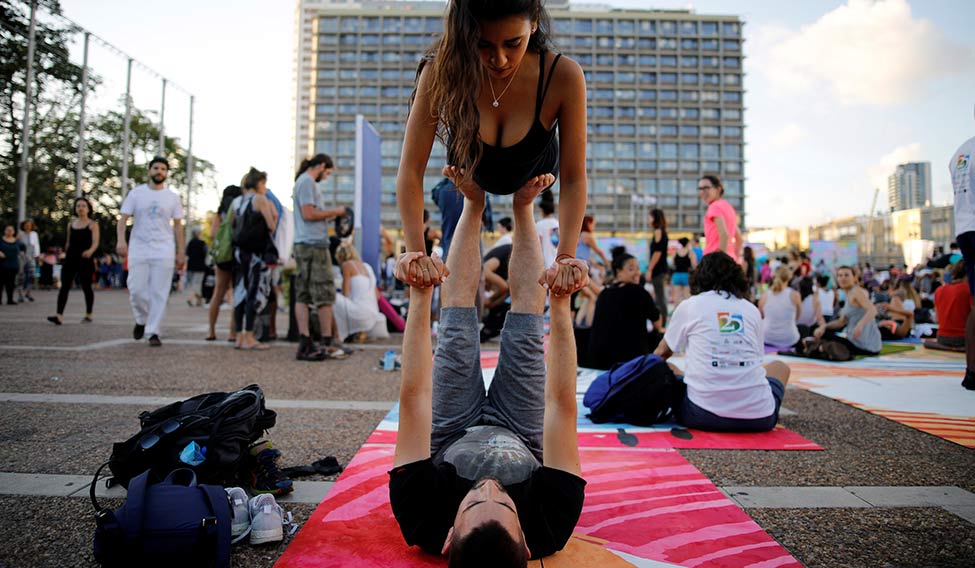 A delicate balance: A couple practises yoga at Rabin Square in Tel Aviv to mark the International Day of Yoga on June 21 | Reuters
A delicate balance: A couple practises yoga at Rabin Square in Tel Aviv to mark the International Day of Yoga on June 21 | Reuters
The West Asians have newer crises to tackle. One has been the rise of the Sunni ‘Islamic State’ across the Iraqi-Syrian landscape, which, many Israelis believe, is on the verge of being defeated. The other, a constant worry for the past few years, has been about the unpredictable Arab Springs that are spawning new insurgencies. But the ‘clear and present danger’ is a third one: the strategic reassertion of a presumably nuclear-armed Shia Iran, and its suspected support to a host of new insurgencies. “Iran is giving Hizbullah up to $75 million a year, $50 million to [the Palestinian Sunni group] Hamas and $70 million to all jihadis,” said Maj-Gen Herzl “Herzi” Halevi, head of Israel military’s intelligence directorate.
Hamas continues to be a problem, but most Israelis believe that it can be managed. The larger problem for Israel is Hizbullah, the other insurgencies in Syria and Lebanon, and, finally, Iran. According to Karmon, the Houthi insurgents, whom the Saudis are fighting in Yemen, and Hizbullah, which is waging war on Israel from Lebanon, “have trained together in Iran, Lebanon and Yemen. The new Houthi leader Abdal Malik al-Houthi has been accusing Israel and the US of being behind the Saudi war in Yemen.”
I heard the same view the following day from Defence Minister Avigdor Lieberman at the Herzliya Conference, Israel’s most prestigious strategic brainstorming forum. “Hizbullah is making use of the situation to smuggle advanced weapons from Syria into Lebanon,” said Lieberman. “I would like to warn the Syrian regime, which is encouraging Hizbullah and Iran, against turning Syria into an anti-Israel base.”
Hardly had he concluded his speech when his fighter jets struck Syrian positions on the Golan Heights, in reply to a Syrian bombardment.
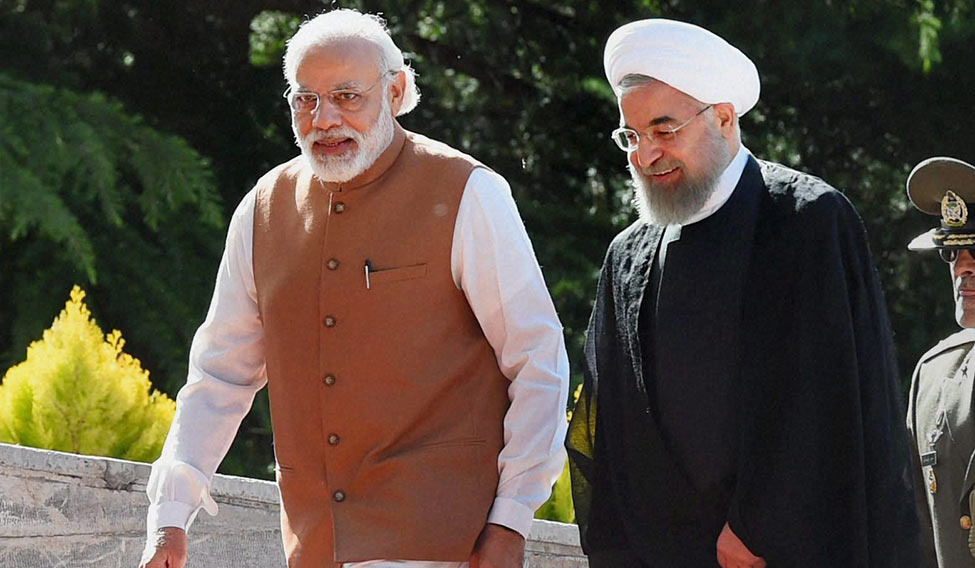 The big bother: Modi with President Rouhani in Tehran. Israel has not been so understanding of India’s ties with Iran, as it has been in the case of Palestine | PTI
The big bother: Modi with President Rouhani in Tehran. Israel has not been so understanding of India’s ties with Iran, as it has been in the case of Palestine | PTI
Experts like Lieberman and Karmon believe that the new threat to Israel, as also to the west, Saudi Arabia and the other Sunni states, is from a gang-up of Iran, the Houthis and Hizbullah. They also know that India is not very convinced of this Persian perfidy.
Israel’s strategic thinkers no longer look at India as a friend of the Palestinians. But they see India as an old friend of Iran, sending its Navy to exercise with Iran’s, its prime minister flying to Tehran last year, and being among the first to congratulate President Hassan Rouhani on his resounding reelection. They also know that, despite all the military tech that Israel has been giving India, and all the talk of having become Israel’s largest arms customer, Indian military is not yet allowed to exercise with Israel’s, and India has not agreed to be a strategic dialogue partner. As Nicolas Blarel, who wrote The Evolution of India’s Israel Policy, pointed out in a recent article, “despite [the] public calls for closer engagement, the bilateral relationship has yet to be publicly labelled as a strategic partnership”. One demand that Israel is likely to make on Modi would be a strategic partnership, or at least a strategic dialogue.
The rationale is simple. The West Asians have come to view every political action of every state through the prism of the new crises, and Modi need not expect any difference in their approach. Even the new untouchability practised on Qatar, and the recent move by the Saudi king to replace his nephew with his son as the crown prince, are viewed through this prism. The new crown prince is learnt to be softer towards Israel and more hawkish towards Iran. The Saudis are even said to have allowed the Israelis to fly through their airspace to rehearse a strike on Iranian nuclear targets, much like Rajiv Gandhi nearly did in the 1980s to strike Pakistan’s Kahuta reactor with Israeli help.
WEST ASIA HAS changed since the end of the Cold War. Those who still expect an Arab outrage over Modi’s visit do not know that it was the Arab world’s iconic leader Yasser Arafat who told prime minister Narasimha Rao 25 years ago to make up with Israel. They also do not know that it was a Muslim diplomat, Abid Hussein, then India’s ambassador to the US, who laid the groundwork for Rao.
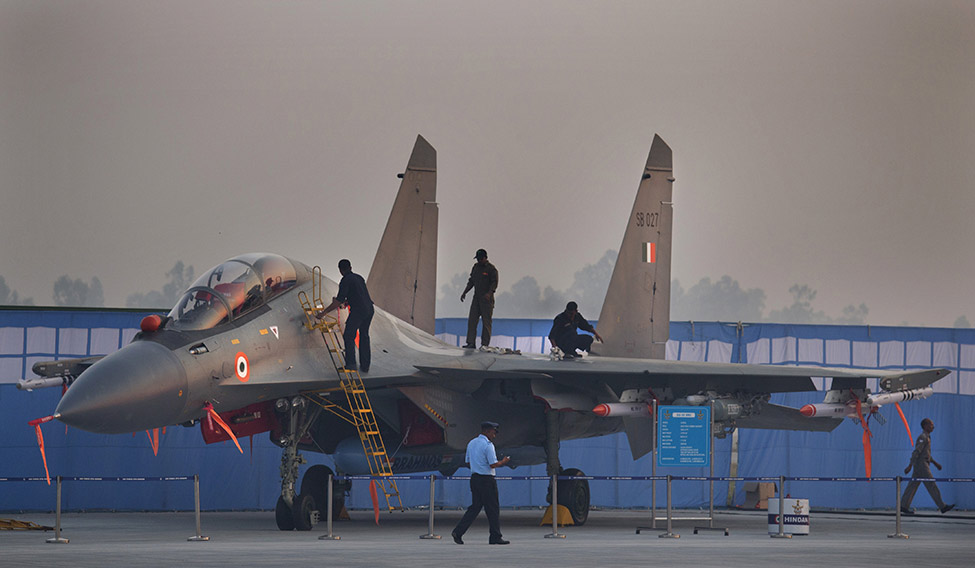 Bang for the buck: India’s Sukhoi-30s are packed with specially-ordered Israeli electronics | AP
Bang for the buck: India’s Sukhoi-30s are packed with specially-ordered Israeli electronics | AP
Israel had been India’s secret friend since then, and even before. If Indira Gandhi had sent her Research and Analysis Wing spies to train with Mossad, and sourced secret militaryware, prime minister Deve Gowda not only met Netanyahu in Davos, and hosted president Ezer Weizmann in Delhi. Gowda bought the ship-borne anti-aircraft missile Barak-1—the first open military deal between India and Israel. Next, he sent his defence science head A.P.J. Abdul Kalam to scout for aeronautics in Israel, followed by his Air Force chief S.K. Sareen. Both of them came back, asking for Searcher unmanned aerial vehicles and sensors.
Prime Minister Vajpayee gave political heft to the ties by sending his deputy, L.K. Advani, and defence minister Jaswant Singh. As the Indian Army found itself eyeless on the Kargil heights with no weapon-locating radars, Israel offered to share its high-powered satellite telescope imagery. Soon after the war, Army chief V.P. Malik travelled to Israel.
It has been raining deals since, posing new challenges to Israeli engineers. For the first time, they were asked to work on platforms built or designed by Russia. In the early 2000s, the Indian Air Force asked Israel, in a $1 billion deal, to mount its radars on three huge Ilyushin-76 transporters and fashion them as Phalcon AWACS. “That was an exciting challenge, and we did it,” an aide to Defence Minister Lieberman told me. “Two follow-on orders of the same came last year.”
The next big deal was the $220 million order for 50 drones in 2005 by the Manmohan Singh government, followed by a mega deal of $2.5 billion to build, jointly with India’s Defence Research and Development Organisation (DRDO), a complex air defence system for shooting down incoming missiles and warplanes.
UNLIKE WHAT MANY believe, it was Manmohan Singh who tried to give strategic heft to what had been a relationship of arms deals. As Nicolas Blarel pointed out, “Many of the defence deals signed since the Modi government came to power had been negotiated by the previous governments.”
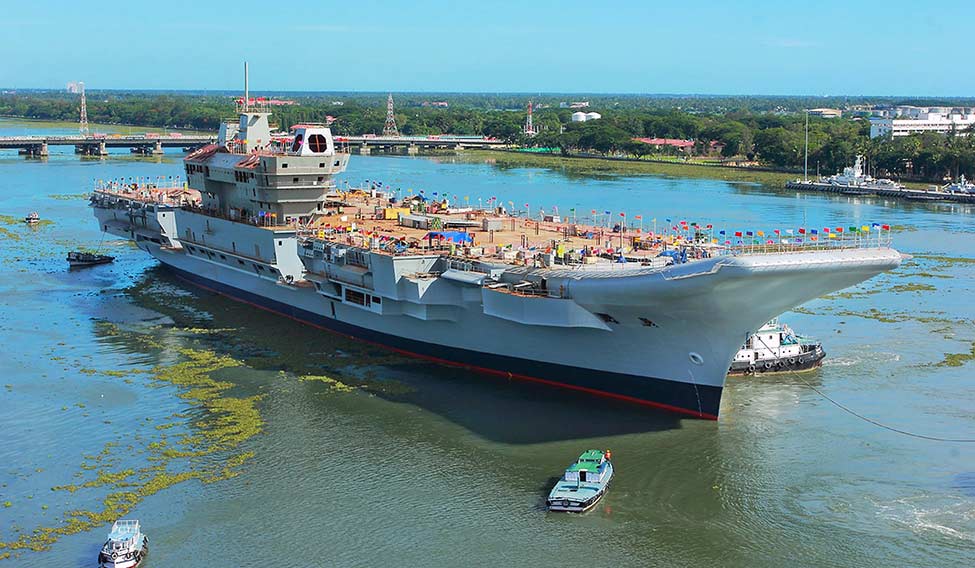 INS Vikrant will have Israeli defence systems | PTI
INS Vikrant will have Israeli defence systems | PTI
Worried about a Pak-China gang-up in the waters to India’s west, he sent Indian warships to make port calls across West Asia, including at Haifa, the Israeli port-town that had been taken by Indian cavalrymen in World War I. (Two months ago, Delhi’s city-fathers named the Teen Murti Square, where a memorial to the Indian cavalrymen stands, as Teen Murti Haifa.)
The strategic thrust came after the 26/11 Mumbai attacks. With the Jewish Chabad House becoming a target, Israel offered help. There was a scheduled visit by an Indian defence team to Israel two days later, to discuss joint weapon-making projects, but Israel offered to send back with them a company of 40 commandos. India gratefully turned down the offer, but allowed a team of doctors and paramedics.
Within weeks of the Mumbai attacks, the Indian Navy proposed a harbour defence system, and the Manmohan Singh government okayed it in no time. It took nearly a decade to build the complex underwater harbour defence and surveillance system, developed by Israel’s Elta. “We finally got it running early this year,” an Israeli defence officer told me. Since the Mumbai attacks, the mutual visits have been frequent, though the government has been shy of talking about them. A major one was by Israel’s defence chief of staff Lt Gen Gabi Ashkenazi in December 2009.
MODI HAS JUST shed the shyness. If Singh toyed with the idea of buying 8,000 Spike anti-tank missiles and 320 launchers, Modi finalised the deal for $1 billion. In 2015, he allowed the Indian Air Force to buy 10 Heron drones, which are likely to be delivered shortly after the upcoming visit. Within a month of swearing in, Modi sent a defence team to seek Swordfish radar trackers and precision-guided artillery.
 Soaring alliance: lndian and Israeli experts overseeing pre-launch operations of an Israeli imaging satellite at Satish Dhawan Space centre in Sriharikota in January 2008 | AFP
Soaring alliance: lndian and Israeli experts overseeing pre-launch operations of an Israeli imaging satellite at Satish Dhawan Space centre in Sriharikota in January 2008 | AFP
Today, the defence deals alone are worth about a billion dollars a year, making India Israel’s largest military customer, and Israel India’s third largest supplier. A $2 billion deal, announced in April, is the largest defence contract in Israel’s history, for medium-range anti-aircraft and anti-missile systems for the Indian Army and the Navy. A few of these will be fitted on the aircraft-carrier INS Vikrant, which is being built in Kochi. The Israelis expect the announcement of a Rs 3,200-crore deal for Spike anti-tank guided missiles during Modi’s visit.
Scores of other deals have already been signed or are being processed. In May, the stealth destroyer INS Kochi test-shot a low-flying target with a new medium-range, anti-aircraft missile being developed by DRDO and Israel Aerospace Industries. A week earlier, DRDO test-fired another Israeli anti-aircraft missile, the SPYDER, off Odisha coast, to check its effectiveness against low-flying enemy fighters, unmanned aerial vehicles and cruise missiles at less than 15km.
There are reports that India has asked for Herons to be made here as part of Make in India, and the deal is likely to be announced during Modi’s visit. This is likely to be followed up with an order for Hermes-450 drones, which can also knock off incoming missiles.
Last year, Modi sent Air Force chief Arup Raha to Israel, followed by Navy chief Sunil Lanba this year. INS Trikand had made a port call at Haifa in August 2015. Three warships, led by the stealth frigate Trishul, docked at Haifa earlier this year. They were led by western fleet commander Rear Admiral R.B. Pandit, who told his Israeli hosts about how Barak-8 “provides the Indian Navy new and greater air-defence capabilities”. Barak-8, which will be given to the Air Force, too, can shoot down any enemy airplane or cruise missile as far as 70km away.
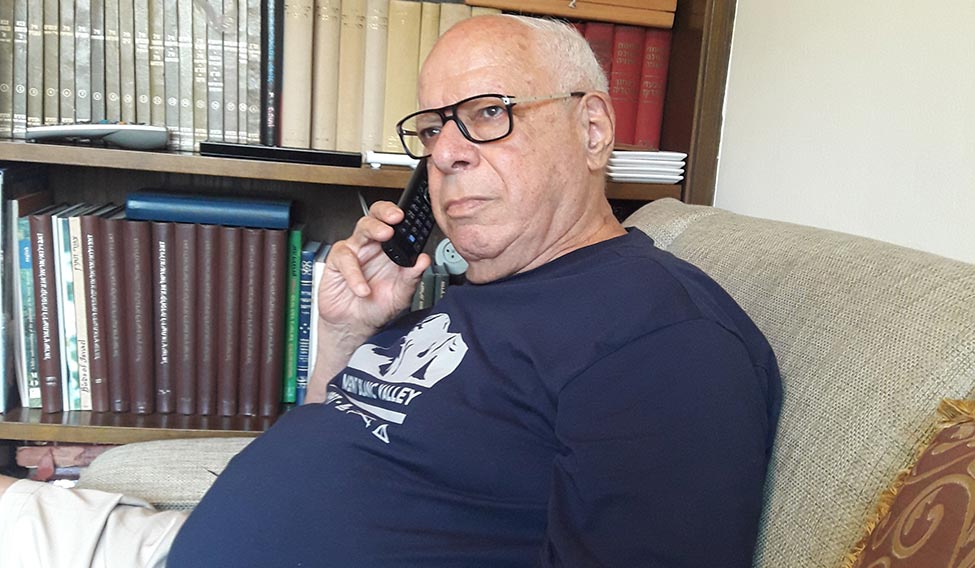 Aby Har-Even
Aby Har-Even
One reason why the relations are still kept under wraps—and that has nothing to do with domestic politics—is the secretive nature of certain deals. Israel does not sell big-ticket weapons like tanks, fighter jets and warships, which have high visibility. Rather, Israel sells secret technologies that go into the weapon systems made by other countries. “All our military technologies are field-proven,” pointed out Ron Paz, hinting at how they are different from superpower militaryware that are developed just for sale. A new underground radar, which Israel has developed to detect tunnels dug by Hizbullah, is likely to be the next item on offer to India. India may need them on the western border.
Neither Israel nor India likes to talk about what has gone into the upgrade of India’s 100-odd aged MiG-21 fighter jets, except that the upgrade cost $600 million. India’s Sukhoi-30 fighters, built on Russian hardware, are different from the Chinese fleet of Sukhoi-30s because the Indian birds are packed with specially-ordered Israeli electronics.
The Israelis, too, have been benefiting from the quietude of the relations. They are learnt to be keen on setting up logistics bases in the Indian Ocean to secure their sea trade, and the only force that can help them is the Indian Navy. A few years ago, the Indian Navy is said to have helped Israel hold a few secret cruise missile tests off the Sri Lankan coast.
Missile and rocket launches are something for which Israel depends on India most, because of two factors: one, the clear lead that India enjoys over Israel in space technology, and two, because of a curious geopolitical disadvantage that Israel suffers from. “I have always been impressed by the long-range planning your people made in space technology,” the much-venerated Aby Har-Even, former head of the Israeli space programme, who worked with India’s K. Kasturirangan to launch an Israeli satellite on an Indian launcher, told me. “You have powerful launchers which are as good as those of the US and Russia.”
Har-Even recalled how he approached India once with a peculiar problem. Space engineers across the world like to launch their satellites eastward, because the earth’s eastward spin gives the satellite an additional thrust. But, since Israel has only enemies to its east, and its only sea coast is to the west, Israel just cannot launch its satellites eastward. It envies India’s ideal launch pads located on the east coast.
Thus, in 2008, Har-Even got Kasturirangan, former chief of the Indian Space Research Organisation, to launch a radar imaging satellite, TecSAR. The following year, he gifted Kasturirangan an Israel-made radar imaging satellite, RISAT-2, and told the diplomats to keep quiet about the one-metre resolution camera.
The talks that Israel’s Minister for Science Ofir Akunis had on newer programmes during his December 2016 visit to India are expected to bear some fruit during Modi’s visit. But the Israelis are not giving out any details now.
HAVING THUS FETED India with all the arms it wants, what does Israel want from Modi? While Israel has demonstrated an extraordinary maturity regarding India’s ties with the Palestinians, it has not been so understanding of India’s ties with Iran. Israelis are miffed that India has steadfastly refused to let its armed forces join strategic exercises with the Israeli forces, whereas the Indian Navy has had no qualms about exercising with the Iranian navy.
Also, India has been resisting the pressure to join any sort of strategic dialogue with Israel, though there has been running dialogues with even minor states like the Seychelles and Mongolia. “We want India to be a strategic partner,” said Anat Bernstein-Reich, president of the Israel-India Friendship Association. Indications are that Israel will ask Modi to give such a strategic heft to the ties. How Modi will respond is not clear.
Interestingly, on this count, India has a better comfort level with Iran. Tehran has never protested against India’s military deals with Israel. The only exception was when India launched Israel’s TecSAR satellite, which the Iranians worried would spy on them. “Iran has been much more mature in its approach towards India than has been Israel,” said an Indian diplomat.
Indications are that there will be pressure on Modi to use India’s good offices with the Sunni Arab states that are getting closer to Israel, and persuade them to become partners in a coalition “which can contain Iran-led Shia terror”, as former defence minister Moshe Ya’alon put it in another context. “We don’t have any fight with the Sunni camp,” he said. “Hamas hasn’t fired a single shot in three years. But we (the Sunnis and the Jews) have common enemies like Iran.”
The big question now is: would Modi be swayed by all the anti-Iran rhetoric that is now bringing the Jews and the moderate Sunnis together, and which apparently has the blessings of US President Donald Trump?
Not all are convinced even about the viability of such a gang-up. At the Herzliya Conference, a few western thinkers stood out with a divergent opinion. “You ought to be careful about permanently allying with Saudi Arabia,” said Sir Robert John Sawers, former head of British spy agency MI6. “Iran has better prospects than Saudi Arabia [to emerge as a stabilising regional power].”
I found that all this talk discounts the threat the Sunni-majority Pakistan continues to pose. None of the strategic talk in Israel has factored in Pakistan, which Modi has been calling the fountainhead of terror. Moreover, as long as Pakistan remains hostile, India would have to rely on Iran’s ports and highways to access Afghanistan and Central Asia.
In short, India will have to continue playing the same game with new players. In the past 25 years, India had remained politically linked to the Arabs while militarily tying up with Israel. From now on, India may stay politically linked to Iran and militarily linked to Israel.
